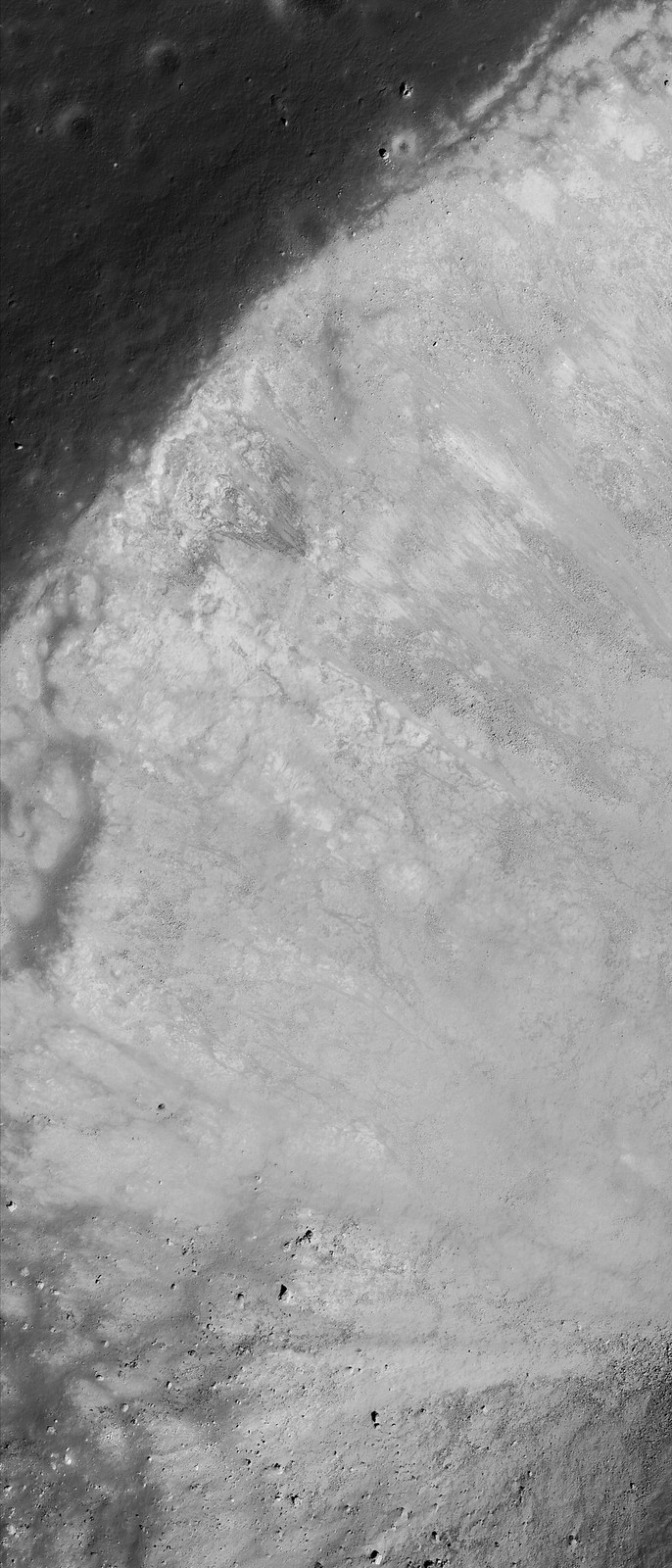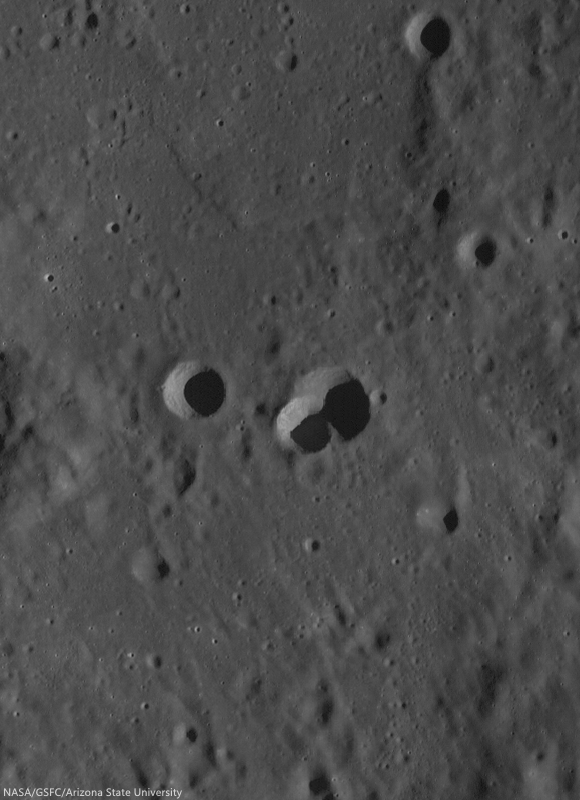 |
| A complex interplay of slumping and slides in the northwest wall of Berzelius W result in banding patterns; downslope is toward the bottom right in this 230 meter-wide field of view from LROC NAC observation M174921824R, LRO orbit 10912, November 3, 2011; 53.59° incidence angle, resolution 40 cm from 23.87 km over 38.06°N, 53.02°E [NASA/GSFC/Arizona State University]. |
LROC News System
Berzelius W (7.17 km; 38.137°N, 53.103°E), on the northeast limb of the Moon (as seen from the Earth), exhibits abundant evidence for mass wasting.
Materials of varying albedo create intricate patterns on the walls of the crater, including the banding patterns featured in the opening image.
Materials of varying albedo create intricate patterns on the walls of the crater, including the banding patterns featured in the opening image.
This particular portion of the wall includes a block of slumped material, as indicated by the characteristic arcuate faults near the crater's rim crest (see image below). The slumped material is overprinted by finger-like flows of finer particles that moved as slides of dry debris.
high albedo (bright) ejecta around the crater and the subdued appearance of the rim crest indicate that this crater did not form particularly recently; perhaps it is between 1 and 2 billion years old.
Try to find at least three other examples of mass-wasting features in the western half of this crater below. Pan and zoom to find examples of landslides, talus deposits, and boulder tracks:
 |
| Full 850 meter-wide field of view from remarkably high resolution LROC NAC observation M174921824R [NASA/GSFC/Arizona State University]. |
Related Features:




No comments:
Post a Comment